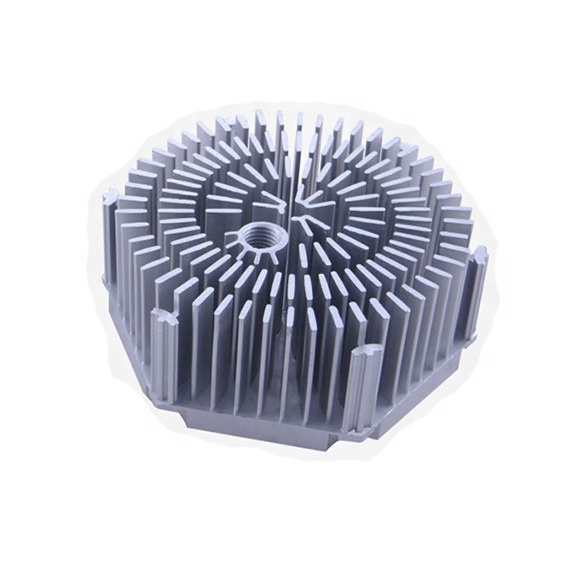Tel: +86-18025912990 | Email: wst01@winsharethermal.com
Blog


Views: 12 Author: Site Editor Publish Time: 2022-03-30 Origin: Site
Forging has the capacity to deal with different temperature conditions, as it needs no heat to complete the process. For instance it includes cold forging, hot forging, warm forging. It offers reproducibility & interchangeability. Through cold forging you can achieve a number of advantages like minimal contamination issues, greater strength, superior surface finish, improved dimensional control, to increase directional qualities.
It is an effective method and also proven economically efficient method to produce large quantities of metal parts at very low price. Cold forging is achieved via machines accompanied with hammers, or through press for pressing, shaping, plus rolling steel's. The biggest advantage of cold forging is its cost effectiveness over hot forging and happens at room temperature. Most interestingly, cold forging saves upto 70% production cost plus produce little scrap and waste.
Here in this article, we are going to dig out all the details about cold forging along with the advantages in detail.
Cold forging deforms the metal whereas it is below from its recrystallization point. Cold forging is usually preferred when the metal is already a very soft metal, like for example aluminum. This process is generally less expensive than that of hot forging and the ending product requires little, or no finishing work. Oftentimes, when aluminum is usually cold forged into a given shape, it is the heat that is treated to strengthen the piece. This is also called “tempering.”
Despite the word “cold,” cold forging actually happens at or near according to room temperature. And The most generic metals in cold forging that require for applications are usually carbon alloy steels or standard alloy steel. One of the most important types of cold forging regarding a process also called impression-die forging, where the metal is always placed into a quality die that is affixed to an anvil. The metal is when it is hit by a descending hammer meaning hammering it in descending order and pushed into the die. Depending on the product type, the hammer can actually be dropped on the surface of metal various times in a very rapid sequence.
Forging processes, be it cold or hot forging, are generally not considered to be an energy saving or eco-friendly part of the all manufacturing process, but luckily cold forging is certainly the most common eco-friendly process of its unique kind in operation today. For those companies that care too much about reducing the carbon footprint of their nasty products, the cold forging process would help to reduce waste and lessen energy uses as compared to forging substitutes or alternatives that uses the heat.
Other reasons or advantages that stress why the cold forming process is the best and authentic or preferred choice include the:
lHigh quality of the surfacing material
lConsistency to all & each part manufactured
lEfficient usage of material.
lno heat is necessary
lOffer increased reproducibility & interchangeability
lsuperior surface finish
lminimal contamination issues
limproved dimensional control
lgreater strength
loffers high ductility
lgreat design flexibility
lrefines structure of metal
lIt also offers broad size ranges
lDemand fewer secondary operations
In addition to the reasons that we listed above and due to the eco-friendly factors, cold forming is also considered one of the most cost-effective or cost-saving methods of forging in today’s market. For example, estimates show that this process may reduce your cost as much as 40 to 60%!
Cost optimization in the process of cold forging usually starts with the raw material. To obtain the most and most cost efficiency you should manage the manufacturing process with great know-how and involve all tools and techniques. For instance, large batches of the cold extruded elements are manufactured on very high speed mechanical presses, but at the same time complex parts plus small series instead of hydraulic presses.
Factors you should consider when do cold forging are include:

Careful control if it takes over the material volume then it prevents stress and damage, specifically in closed forging, because the excess now has nowhere to escape.
This coating process always improves material flow while the process reduces force, stress, and friction and improves surface quality.
Annealing as you know softens the metal, by improving the flow of the material. It could be applied when work hardening occurs as an intermediate process before the completion of the forging process.
Lubrication is very critical during the process of cold forging. High-viscosity oil always protects against the all metal-on-metal friction along with applying thin oil to dissipate heat.
Ready to warm up to cold forging WITH Winshare?
Whether you’re in a journey of exploring different options for your brand new product or you have an existing /old one which l you would like to put into pure production, The Winshare will provide you the data along with the other tools you desire to make well structured sourcing decision for your next product— we will optimized for your manufacturing operation.
Winshare provides warm, cold, and hot forging or may be the combination of all three different processes to address several customer demands, and both performed in excellent conditions with the state-of-the-art machinery required for perfect results. We also provide high-quality contract or custom manufacturing services to a vast variety of industries for many years. Contact us today to learn more!
Finally, a manufacturer can choose the cold forging process over the other because of the economical and quality reasons. The decision should be based on the required and essential functions of the desired component, from the specified industry and if it is a mass production plus a low volume of customized parts.